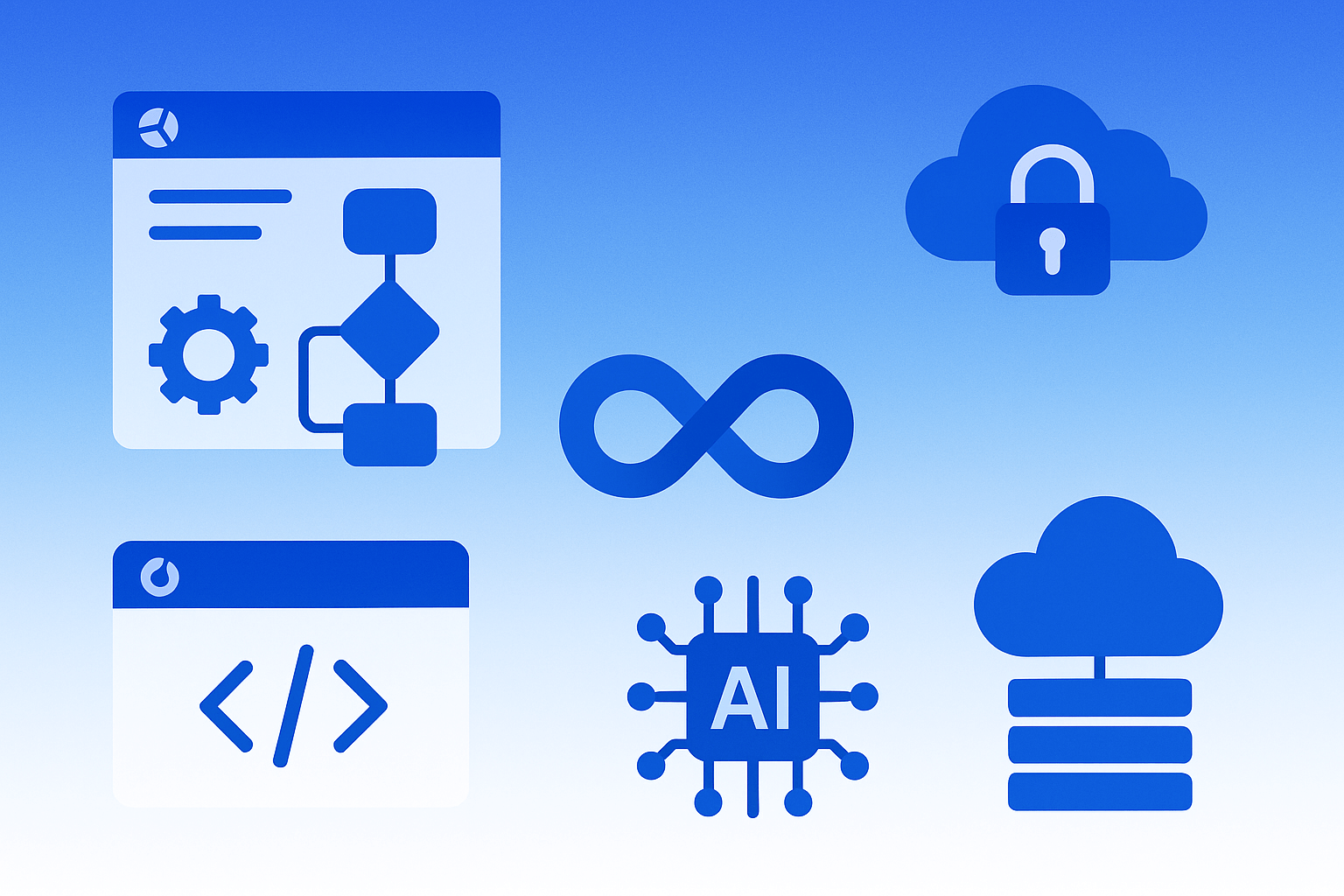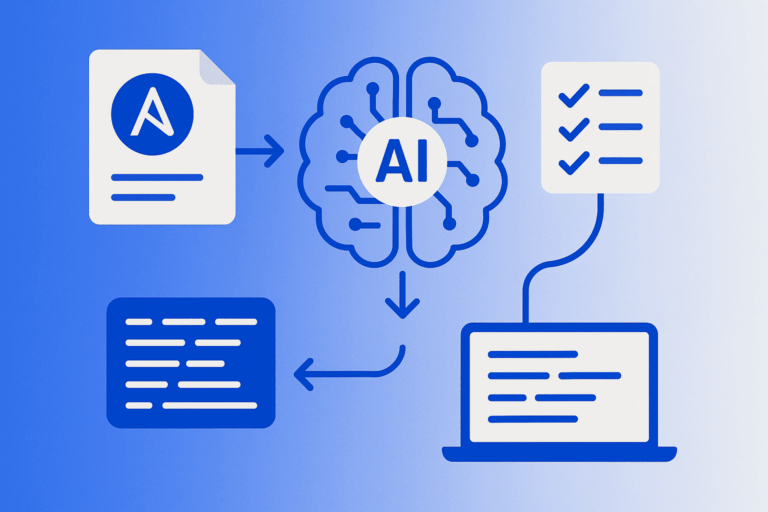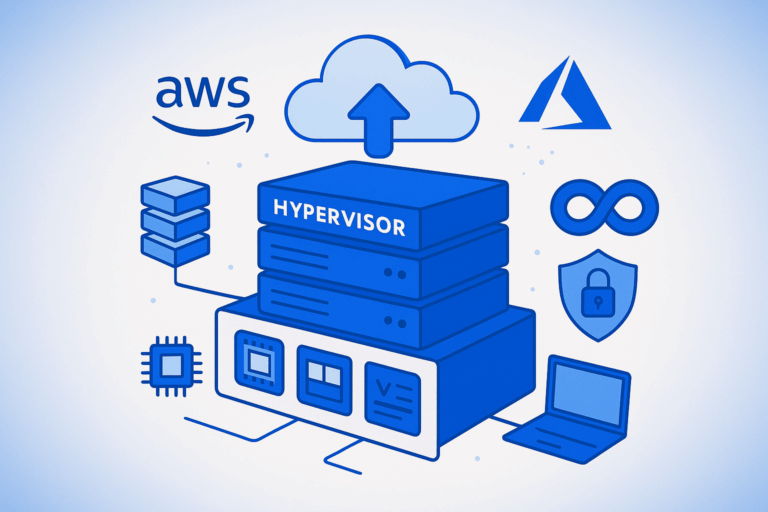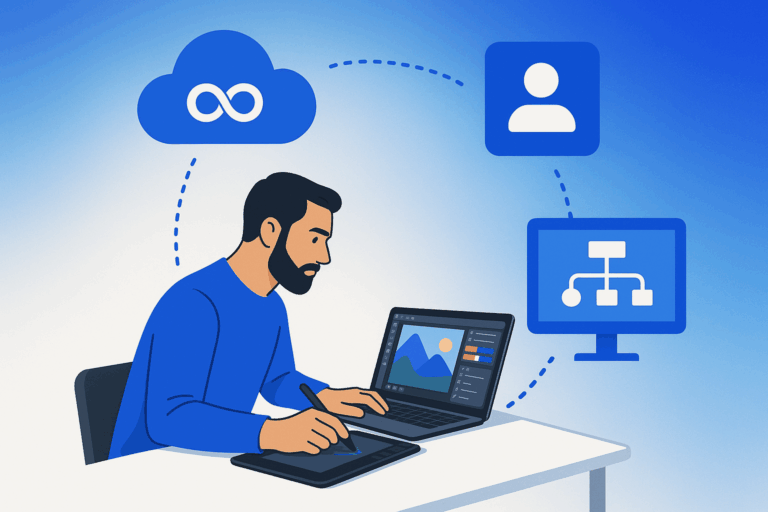The Developers Lens

Making Technology Accessible for Everyone
In today’s rapidly evolving digital landscape, technology isn’t just for computer science graduates anymore. Whether you’re a seasoned DevOps Engineer managing Azure Cloud infrastructure or a business professional looking to streamline workflows, understanding the fundamentals of modern development has become essential for career growth and operational efficiency.
The democratization of technology through AI-powered automation, low-code platforms, and intuitive cloud technology is transforming how we approach problem-solving in the workplace. Gone are the days when creating applications, understanding user experience design, or implementing robust cyber security measures required years of coding expertise.

🎯 Why This Guide Matters for IT Professionals
Modern IT professionals face unprecedented challenges. Cloud businesses are scaling faster than ever, DevOps practices are becoming more complex with tools like Terraform for infrastructure management, and the demand for seamless user experiences continues to rise. Yet, many professionals feel overwhelmed by the technical barriers that separate them from implementing innovative solutions.
This comprehensive guide bridges that gap by exploring three critical areas that every IT professional should master:
- Automation without coding expertise using platforms like Google AppSheet and Airtable
- UX/UI design principles that make or break application success
- Cloud authentication mechanisms that secure our digital infrastructure
🔧 The Automation Revolution: No-Code Meets Enterprise Needs
Understanding Low-Code and No-Code Platforms
The no-code movement isn’t just a trend – it’s a fundamental shift in how we approach software development. These platforms enable IT businesses to create powerful applications without traditional programming knowledge, democratizing innovation across organizations.
Key No-Code Platforms Transforming Businesses:
| Platform | Best For | Key Features | Enterprise Ready |
|---|---|---|---|
| Google AppSheet | Data-driven apps | Excel integration, offline sync | Yes |
| Microsoft PowerApps | Office 365 integration | SharePoint connectivity, Flow automation | Yes |
| Airtable | Database management | Collaborative workflows, API access | Yes |
| Zapier | Process automation | 5000+ app integrations, multi-step workflows | Yes |
The business impact is significant. Companies using low-code platforms report 50% faster application development cycles and 75% reduction in traditional coding requirements. For DevOps Engineers working with AWS Cloud or Azure Cloud environments, these tools complement Infrastructure as Code practices while reducing development bottlenecks.
Real-World Automation Success Story
Consider TechCorp, a mid-sized cloud hosting company using Devolity Hosting services. They needed a customer onboarding system that integrated with their existing Terraform infrastructure. Instead of hiring additional developers, their IT team used Google AppSheet to create a comprehensive solution in just two weeks.
Implementation Process:
- Week 1: Data mapping and workflow design using AppSheet’s visual builder
- Week 2: Integration with existing cloud databases and testing
- Result: 80% reduction in manual onboarding tasks and improved customer satisfaction
This example demonstrates how AI-powered automation tools can complement traditional DevOps practices without replacing core infrastructure management skills.
🎨 UX/UI Design: Beyond Pretty Interfaces
The Psychology Behind User Experience
Great UX/UI design isn’t about making applications look attractive – it’s about creating intuitive pathways that reduce cognitive load and increase productivity. For IT professionals managing enterprise applications, understanding these principles directly impacts user adoption and system efficiency.
Core UX/UI Principles Every IT Professional Should Know:
- Cognitive Load Theory: Minimize mental effort required for task completion
- Progressive Disclosure: Present information in digestible chunks
- Feedback Loops: Provide clear system responses to user actions
- Accessibility Standards: Ensure inclusive design for all users
Why Applications Fail: A Developer’s Perspective
Most application failures stem from poor UX/UI design decisions rather than technical limitations. Common issues include:
Navigation Problems:
- Unclear menu structures
- Inconsistent interaction patterns
- Missing breadcrumb navigation
- Poor mobile responsiveness
Performance Issues:
- Slow loading times affecting user perception
- Unoptimized images and assets
- Inefficient database queries
- Poor cloud hosting architecture
Security UX Failures:
- Complex password requirements without clear guidance
- Confusing multi-factor authentication flows
- Unclear cyber security notifications
- Poor error messaging during login processes
UX/UI Impact on Business Metrics
Research shows that every dollar invested in UX design returns \$100 in revenue. For cloud businesses, this translates to:
- 200% increase in user engagement
- 400% improvement in task completion rates
- 50% reduction in support tickets
- 67% increase in customer retention
Why choose Devolity
Unmatched Expertise in
Cloud and Cybersecurity
Devolity team of certified professionals brings decades of combined experience in managing complex cloud environments and defending against evolving cyber threats.
01
End-to-End Solutions for Every Business Need
DevOps with Cybersecurity Services: Hybrid/multi-cloud management, cost optimization, and DevOps integration with Risk assessments.
02
Customized Strategies, Not One-Size-Fits-All
We understand every business is unique. Devolity prioritizes collaboration, crafting bespoke solutions aligned with your industry, goals, and risk profile.
03
Proactive Protection with 24/7 Vigilance
Cyber threats never sleep—and neither do we. Devolity Security Operations Center (SOC) offers round-the-clock monitoring, rapid incident response.
🔐 Cloud Authentication: Security Behind the Scenes
The Authentication Journey Simplified
When users tap ‘Sign In’ on any application, a complex series of cloud-based authentication processes execute within milliseconds. Understanding this workflow is crucial for IT professionals managing AWS Cloud or Azure Cloud environments.
The Authentication Process Breakdown:
- Credential Submission: User provides username/password or biometric data
- Identity Verification: System validates against stored user database
- Token Generation: Creates secure session tokens (JWT) for ongoing access
- Permission Assignment: Maps user roles to specific resource access
- Security Monitoring: Continuous threat detection using AI algorithms
Modern Authentication Methods
Multi-Factor Authentication (MFA) Implementation:
Traditional password-only systems are insufficient for modern cyber security requirements. Cloud technology enables sophisticated authentication methods:
- Something you know: Passwords, PINs, security questions
- Something you have: Mobile devices, hardware tokens, smart cards
- Something you are: Fingerprints, facial recognition, voice patterns
Single Sign-On (SSO) Architecture:
SSO solutions streamline user access across multiple applications while maintaining security. For DevOps Engineers managing microservices architectures, SSO reduces authentication complexity and improves system integration.
Security Best Practices for Cloud Authentication
Identity and Access Management (IAM) Fundamentals:
Modern cloud hosting platforms require robust IAM strategies:
- Role-Based Access Control (RBAC): Assign permissions based on job functions
- Just-in-Time (JIT) Access: Grant temporary permissions for specific tasks
- Adaptive Authentication: Adjust security requirements based on risk assessment
- Zero Trust Architecture: Verify every access request regardless of source
🤖 AI and Automation in Modern DevOps
Intelligent Infrastructure Management
Artificial Intelligence is revolutionizing DevOps practices by introducing predictive capabilities and automated decision-making. AI in DevOps enables:
Predictive Analytics:
- Infrastructure failure prediction using machine learning
- Resource optimization based on usage patterns
- Automated scaling decisions for cloud hosting environments
- Performance bottleneck identification
Automated Code Review:
- AI-powered vulnerability detection
- Code quality assessment using machine learning models
- Automated testing recommendations
- Security compliance validation
Terraform and Infrastructure as Code Evolution
Terraform continues to be the gold standard for Infrastructure as Code, but AI integration is enhancing its capabilities:
- Intelligent resource planning based on historical data
- Automated configuration optimization for cost reduction
- Predictive scaling for dynamic workloads
- Security policy enforcement using machine learning
🏢 Devolity Business Solutions: Optimizing Your Technology Stack
Devolity Hosting brings enterprise-grade cloud technology solutions to businesses of all sizes. With certified expertise in AWS Cloud, Azure Cloud, and hybrid cloud architectures, Devolity helps organizations implement the technologies discussed in this guide.
Core Devolity Capabilities:
- 99.99% uptime guarantee with redundant cloud hosting infrastructure
- Certified DevOps Engineers specializing in Terraform automation
- AI-powered monitoring for proactive threat detection
- Comprehensive cyber security solutions including advanced authentication systems
Industry Certifications and Achievements:
- AWS Advanced Consulting Partner status
- Microsoft Azure Gold Partner certification
- ISO 27001 compliance for cyber security standards
- 500+ successful cloud migration projects completed
Organizations leveraging Devolity’s cloud hosting solutions report 40% improvement in application performance and 60% reduction in infrastructure management overhead.
📊 Implementation Guide: Getting Started
Phase 1: Assessment and Planning (Weeks 1-2)
Technology Audit:
- Evaluate current automation capabilities
- Assess UX/UI design maturity across applications
- Review existing cloud authentication security measures
- Identify integration opportunities with AI and DevOps tools
Phase 2: Tool Selection and Setup (Weeks 3-4)
Platform Evaluation Matrix:
| Criteria | Google AppSheet | Microsoft PowerApps | Airtable | Weight |
|---|---|---|---|---|
| Ease of Use | 9/10 | 8/10 | 9/10 | 25% |
| Integration Capabilities | 8/10 | 10/10 | 7/10 | 30% |
| Enterprise Security | 9/10 | 10/10 | 8/10 | 25% |
| Cost Effectiveness | 8/10 | 7/10 | 8/10 | 20% |
Phase 3: Pilot Implementation (Weeks 5-8)
Start with low-risk automation projects that demonstrate immediate value while building team confidence in no-code platforms.
🔧 Troubleshooting Common Implementation Issues
Low-Code Platform Challenges
Issue 1: Integration Complexity
- Symptom: Difficulty connecting no-code tools with existing systems
- Solution: Use API-first platforms like Zapier for seamless connectivity
- Prevention: Plan integration architecture before tool selection
Issue 2: Scalability Concerns
- Symptom: Performance degradation as user base grows
- Solution: Implement cloud hosting solutions with auto-scaling capabilities
- Prevention: Design for scale from project inception
UX/UI Design Problems
Issue 3: Poor Mobile Experience
- Symptom: High bounce rates on mobile devices
- Solution: Implement responsive design principles and mobile-first approach
- Prevention: Test on multiple devices throughout development
Issue 4: Accessibility Compliance
- Symptom: Legal compliance issues and excluded user groups
- Solution: Follow WCAG 2.1 guidelines and conduct accessibility audits
- Prevention: Build accessibility requirements into design specifications
Cloud Authentication Failures
Issue 5: SSO Integration Problems
- Symptom: Users unable to access multiple applications seamlessly
- Solution: Implement federated identity management using SAML or OAuth
- Prevention: Plan identity architecture across all systems
Issue 6: Security Vulnerabilities
- Symptom: Unauthorized access attempts or data breaches
- Solution: Enable multi-factor authentication and continuous monitoring
- Prevention: Regular security audits and cyber security training
🎯 Measuring Success and ROI
Key Performance Indicators
Automation Metrics:
- Time saved per process (target: 50% reduction)
- Error rate decrease (target: 75% improvement)
- User adoption rate (target: 80% within 6 months)
- Cost savings from reduced manual work
UX/UI Improvement Indicators:
- Task completion rate increase
- User satisfaction scores improvement
- Support ticket reduction
- Application usage frequency growth
Security Enhancement Measures:
- Successful authentication rate
- Security incident reduction
- Compliance audit scores
- User security behavior improvement

🚀 Future Trends and Emerging Technologies
The convergence of AI, automation, and cloud technology continues accelerating. DevOps Engineers should prepare for:
- Autonomous infrastructure management using advanced AI algorithms
- Voice-activated development environments reducing traditional coding needs
- Quantum-secured authentication for next-generation cyber security
- Augmented reality interfaces transforming UX/UI design paradigms
Organizations partnering with forward-thinking cloud hosting providers like Devolity position themselves to leverage these emerging technologies as they mature.
💡 Case Study: Complete Digital Transformation
Company: MedTech Innovations (Healthcare SaaS provider)
Challenge: Modernize patient data management while maintaining HIPAA compliance
Solution: Integrated approach combining all three focus areas
Implementation Details:
Phase 1 – Automation (Month 1-2):
- Deployed Google AppSheet for patient intake automation
- Integrated with existing AWS Cloud infrastructure using Terraform
- Reduced manual data entry by 85%
Phase 2 – UX/UI Redesign (Month 2-3):
- Conducted user research with healthcare providers
- Implemented responsive design for tablet-based patient interactions
- Improved task completion rates by 200%
Phase 3 – Security Enhancement (Month 3-4):
- Implemented multi-factor authentication for all user roles
- Deployed AI-powered threat detection using Azure Cloud services
- Achieved SOC 2 compliance ahead of schedule
Results:
- 90% improvement in patient satisfaction scores
- 50% reduction in IT support requests
- $2.3M annual cost savings from operational efficiency
- Zero security incidents in 18 months post-implementation
This transformation demonstrates how integrating low-code automation, excellent UX/UI design, and robust cloud authentication creates synergistic benefits exceeding individual component improvements.
Ready to transform your organization’s technology capabilities? The journey from complex coding requirements to intuitive automation, from frustrating user interfaces to delightful experiences, and from vulnerable systems to robust cyber security starts with understanding these fundamental concepts.
Whether you’re managing DevOps pipelines, architecting cloud hosting solutions, or leading digital transformation initiatives, mastering these three pillars – automation, UX/UI design, and cloud authentication – positions your organization for sustained competitive advantage in our increasingly digital world.
#DevOps #CloudTechnology #Automation #CyberSecurity #UXUIDesign #AIAutomation #Terraform #AzureCloud #AWSCloud #CloudHosting #DevOpsEngineer #DigitalTransformation #LowCode #NoCode #DevolityHosting #CloudSecurity #InfrastructureAsCode #TechInnovation
Transform Business with Cloud
Devolity simplifies state management with automation, strong security, and detailed auditing.







